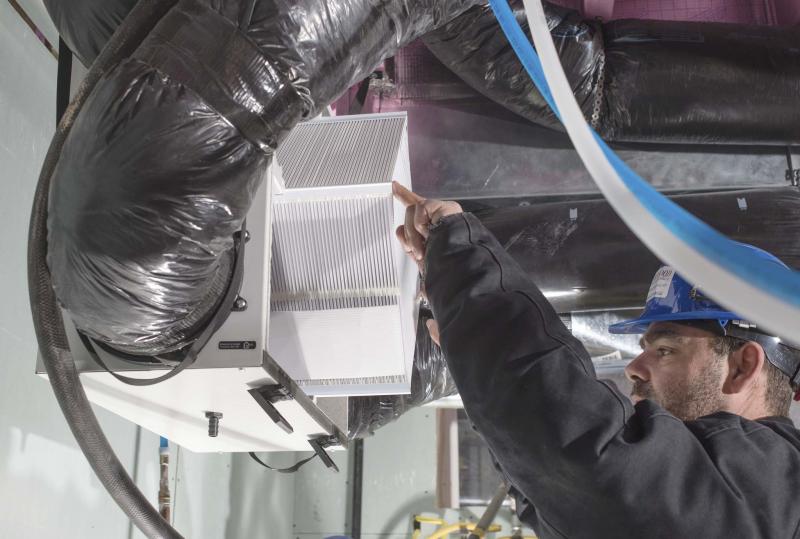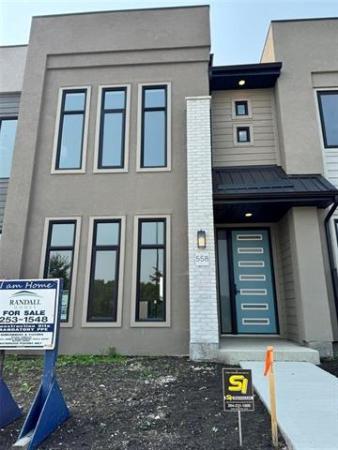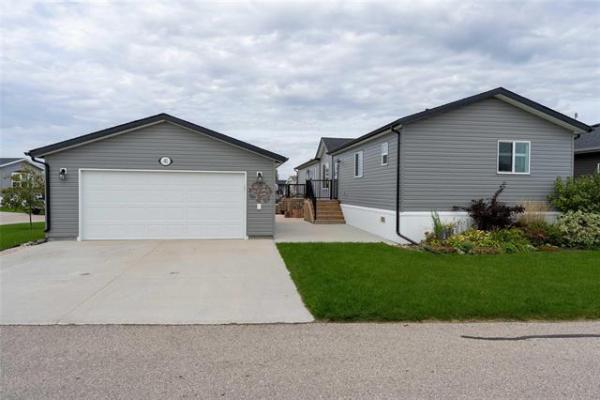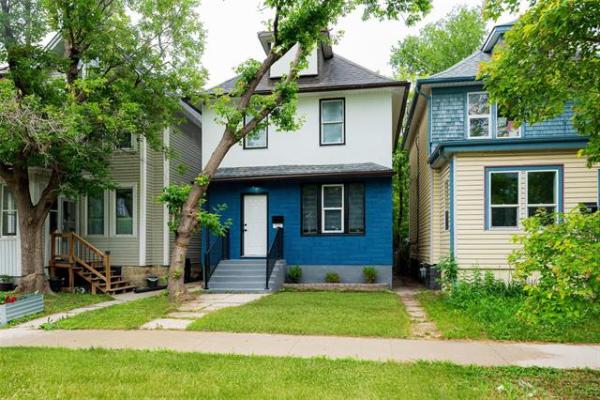Q uestion: We purchased a home, built in 1987, and have a bathroom fan that exhausts through a central motorized fan near the furnace. The vents that are used by the fan to pipe out the side of the house seem to be connected. There are switches in all three bathrooms that turn them on and off. It does not seem to be effective in removing moisture from the bathrooms after showering or using the tub. Who would be able to service or inspect this type of fan, and is there a way to get a more powerful motor unit to get the moisture out? Nobody seems to know what we are talking about when we ask about the unit.
— Anthony Falvo
Answer: There may be a reason you’re not getting much response from contractors for replacement or upgrades to your central exhaust fan: they’re no longer standard in new homes. Upgrading to a heat recovery ventilator (HRV) may be a better choice, but will come with added costs and maintenance.
When your home was built, it was common practice to install a single central exhaust fan in the basement, rather than several individual ones throughout the house. This single fan was connected to registers in each bathroom, and typically one or two others in different rooms, through a series of round ducts. These all connect together into a single duct near the fan, normally in the basement furnace room, and are connected to the central fan. This fan has another duct, often insulated, that exits the home through the foundation or an exterior wall above. These fans are normally self-lubricated and require minimal maintenance. They can last for several decades, with periodic cleaning of debris from the exterior duct and vent hood to prevent blockage.
I am a little surprised that you could not find a contractor who would simply replace this fan for you. It should take minimal effort, and these should still be available at HVAC supply wholesalers or local building centres. The reason you’re having difficulty is likely because these are no longer installed in new homes and have been replaced by HRV. These devices are connected in a similar fashion to your old fan, to ducts and registers in the bathrooms and other locations, and operated manually by controls in these areas. The way they differ from the simple fan is in two main ways.
An HRV is used to control excessive moisture in the bathrooms, similar to your deteriorated fan. When you run a bath or shower, you can manually turn on the unit with the control on the wall in the bathroom. This should have a built-in timer and operate for a pre-set period of time before shutting off. This is almost identical to the current fan operation, except that the control is more sophisticated and timed.
The first difference between the two devices is that your existing fan simply collects the water vapour, along with the previously heated house air, and dumps it outside. While somewhat effective at moisture management, this device is not energy efficient. You have just paid to warm this air with your furnace in the heating season, and then dump it directly outside. This will require additional heating of cold air, drawn in to replace the warm, humid, exhausted air.
An HRV has a core that recaptures a significant amount of the heat from this exhaust air, passing it to the incoming fresh air, improving the energy efficiency. It also has a second insulated duct that ensures adequate fresh air is drawn into the home to replace the stale exhausted air.
The second difference between the two mechanical systems is the automatic dehumidification component of an HRV. While you may be able to install a timed switch to your current set-up, that is about as complex as it may get. To get rid of excess humidity, you manually turn on the bathroom switch. Sometimes there is a humidistat control in the main hallway of the home, but that is normally in newer homes than yours. Even if there is one installed, many homeowners do not know its true function and may not use it. A properly installed and setup HRV will have a dehumidistat control on the main level of the home. This can be set to a specific relative humidity (RH) setting or an approximated level, depending on the model. When the RH in the home exceeds this, the HRV will turn on and automatically remove excessive moisture from the house air, until it satisfies the humidistat control, and then shut off. Many also have pre-timed on and off cycles, but discussion about those may only muddy the waters, so we will leave that for another day.
The best solution for the poor operation of your old central exhaust fan is to replace it with an HRV rather than a simple fan. The only drawback to this will be the cost of the HRV unit, and some additional ones associated with modification of the ducts. Most central exhaust fan ducting is similar in design to that for an HRV, so that should not add too much to the bill.
Replacement of your older bathroom central exhaust fan, by an experienced HVAC or electrical contractor, may be possible, but this could be the ideal opportunity to make a major upgrade for energy efficiency. Replacement of your fan with an HRV will provide better dehumidification while saving money over the long term due to less warm air loss from your home when operating.
Ari Marantz is the owner of Trained Eye Home Inspection Ltd. and the past president of the Canadian Association of Home & Property Inspectors — Manitoba (cahpi.mb.ca). Questions can be emailed to the address below. Ari can be reached at 204-291-5358 or check out his website at trainedeye.ca.
trainedeye@iname.com




